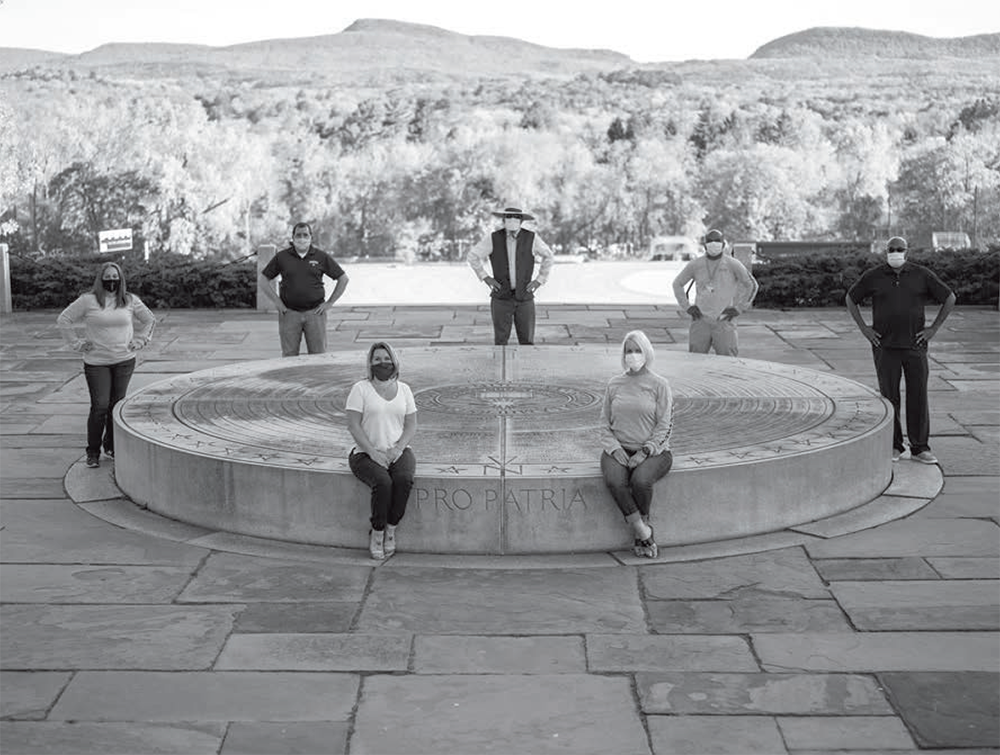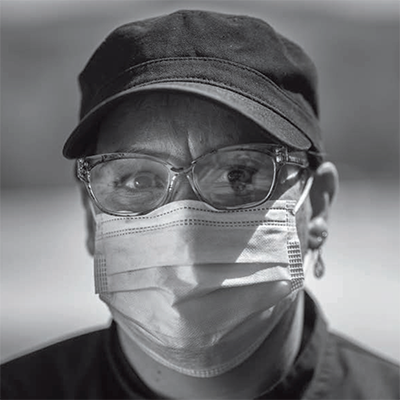
“I can’t help but wonder what could have been,” Maya Roberts ’23, left, told Qiao.
This story begins in Row 39.
That’s where George Qiao was sitting seven years ago as Asiana Airlines Flight 214,
from Seoul to San Francisco, began its landing descent. These days, Qiao is an assistant professor of history and Asian languages and civilizations. He’s also the photographer behind the project Memorial Hill 2020: Portraits of a College Community in Global Pandemic.
On July 6, 2013, though, he was flying back to Stanford University, where he was getting his Ph.D. Qiao had just finished archival research in Korea for his dissertation on Shanxi merchants and banks in the Qing Dynasty.
In the plane’s final approach over San Francisco Bay, the landing gear slammed into a seawall. The left engine, rudder and tail fell off. The Boeing 777 swept into a spin. Black smoke billowed from the fuselage.
There were 307 people on the plane. More than half were injured (187, with 49 of them seriously). Three died.
Those who died had been in rows 41 and 42.
Qiao was physically uninjured. “I was lucky,” he says. But the emotional fallout, the proximity to death, was overpowering. For months he couldn’t get back to his research and writing.
During COVID, some of us have calmed our worried minds by using our hands, painting or gardening or baking or sewing. In grad school Qiao had taken
photography classes, and that’s where he found solace after the crash: “I couldn’t do things, but I could sort of play with cameras.”
Yet this is a scholar, born in Shengze, China, who specializes in Chinese history. At some point he’d have to fly again, for work or to visit family. To help ease his anxiety at being airborne, his therapist tried exposure therapy. The first step was to go back to San Francisco International Airport.

Clockwise from left: staffers Kris Rose, Scott Kinney, Philip Chapman-Bell, Heap Sin, Ralph Johnson, Megan Motyka and Debbie Edwards
“For me, the way to do that was to bring a camera, to take photographs of the airport,” Qiao says. “Photography gives me excitement, and I could use that excitement to counterbalance that fear.”
Which brings us to April 2020, as Qiao photographed his energetic 2-year-old son, Max, as they walked around an eerily empty Amherst campus. When they arrived at the War Memorial, Qiao got the idea to document members of the College community during COVID-19.
“I’m a historian and a photographer, so that’s my starting point,” he says. “I wanted these photographs to be a medium of documentation, not just an art form.”
Because people are physically distanced from one another now, he decided to pose them against the resonant background of the Holyoke Range, “to create a sense of distance and longing and isolation.” The War Memorial
setting was a metaphor too: “During the First and Second World Wars, our campus life was interrupted, so this is the third time in 200 years that we have a major disruption to campus life. These different layers of history, along with the landscape in the background, not only create a sense of individual-versus-larger-forces but also show individuals in a moment in history.”
Qiao and his assistant Haoran Tong ’23, who remained on campus for the spring and summer, put out word about the project, hoping students, faculty, staff, local alumni and their families might participate. Interest overflowed their expectations: Qiao has now photographed 290 members of the campus community, and will continue indefinitely.

Maria Ortiz, below, is a cook in Dining Services. “I have to rush back to Val after this shot,” she told Qiao. “Barbecue chicken is sizzling.”
Look at the portfolio chronologically and you can see the bare trees, and then, later in the spring and through the summer, the hills are in bloom and people hold signs that speak to the protests over
racial injustice. The photos evolve as history evolves.
Qiao usually chooses two poses: a close-up with a facial covering, which he shoots with a telephoto lens, and a more distant, unmasked shot.
Do masks impede expression? Actually, they channel feelings to the eyes, he’s noticed. “Eyes tell the story better when the mouth is shut,” Qiao says. “There were all these sorts of emotions. People are fearful and they feel uncertain about the future. They are angry. I can relate to that, from the experience I had with the trauma in the aftermath of the plane crash.”
Here is a man whose healing process has, in some ways, extended to many others. Because of the Memorial Hill 2020 project, history will see how Amherst College endured in the era of the coronavirus, this tragic and rudderless time.
Photographs by George Qiao